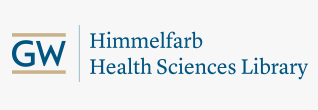Document Type
Dissertation
Date of Degree
Spring 4-9-2025
Primary Advisor
Sabrina Figueiredo, PhD, MSc, BSc (PT)
Keywords
Quality Improvement; SQUIRE 2.0; Quality Improvement Projects
Abstract
Background: Quality improvement (QI) initiatives aim to systematically improve the efficiency and safety of healthcare provided to patients. These data-driven projects also seek to improve processes within the healthcare industry. Potential goals for quality improvement projects (QIPs) can include improving patient outcomes, improving healthcare access, increasing efficiency, and enhancing patient safety. While essential to improve care at the local level, QIPs are not without challenges. Currently, healthcare organizations plan and report the findings of these QIPs in non-standardized ways. This can lead to missing key details and the sharing of inaccurate results, among other things. The Standards for Quality Improvement Reporting Excellence (SQUIRE) 2.0 guidelines provide a framework to help improvers standardize the planning of QIPs to allow for more comprehensive reporting.
Objectives: The objectives of this study were to describe the decision-making process of QI specialists when planning and reporting QIPs and to identify and describe the individual behaviors and contextual factors that enable and prevent the implementation of the SQUIRE 2.0 guidelines in QIP planning and reporting. The final purpose was to develop recommendations to promote the uptake of SQUIRE 2.0 guidelines in QIP planning and reporting.
Methods: This qualitative study used a case study inquiry and collected data via several methods, including document review (QI scientific posters), background questionnaires, and one-on-one interviews. Purposeful sampling was conducted, and 12 improvers participated in the study. Data were collected, coded, and organized into themes and categories (where necessary). Data were analyzed in an inductive-deductive manner.
Results: Twelve participants from various QI and professional backgrounds were interviewed. Eleven participants were from healthcare organizations in the United States, and one was from Canada. Following the analysis of interview transcripts, there were seven themes: (1) planning, implementation, and dissemination of QI varies across organizations; (2) perceived benefits and utility of the SQUIRE 2.0 guidelines in enhancing QI planning, execution, and dissemination vary; (3) challenges and barriers exist in the implementation of the SQUIRE 2.0 guidelines in QIPs; (4) embedding a QI facilitator will enable effective implementation of the SQUIRE 2.0 guidelines; (5) an organizational culture of continuous learning supportive of QI is required to implement new tools; (6) organizational support is key for the successful implementation of new tools; and (7) the quality community must promote SQUIRE 2.0 guideline use.
Conclusion: There were three main findings from this study. First, the current decision-making process related to the planning and reporting of QIPs in healthcare facilities is dependent on organizational context. Second, perceived barriers to the implementation of the SQUIRE 2.0 guidelines are both behavioral and contextual in nature. Finally, promotion of the SQUIRE 2.0 guidelines must occur from various stakeholders for successful uptake to occur.
Recommended Citation
Phillips, Jessica Rose, "Planning and Dissemination of Quality Improvement Activities: A Qualitative Study Evaluating Barriers and Enablers to Implementation of the SQUIRE 2.0 Guidelines" (2025). Doctor of Philosophy in Translational Health Sciences Dissertations. Paper 38.
https://hsrc.himmelfarb.gwu.edu/smhs_crl_dissertations/38
Open Access
1


Comments
©2025 by Jessica Phillips. All rights reserved.